Stock Market Today: 53-Year-Low Jobless Claims Lift the Market
Weekly unemployment claims add to a bevy of positive economic data points, driving a wide rebound across the major indexes.


Stocks logged a broad advance Thursday in the wake of the smallest weekly jobless claims number since John Lennon called it quits with the Beatles.
The Labor Department reported just 187,000 initial unemployment claims for the week ended March 19. That was 28,000 less than last week's revised claims report and the lowest such figure since September 1969.
"Before the pandemic, the number was hovering around 220,000, and we saw a complete recovery to these levels in the previous four weeks," says Alex Kuptsikevich, senior market analyst for forex broker FxPro. "The fresh data has marked a move into uncharted territory, indicating a further tightening in the labor market."

Sign up for Kiplinger’s Free E-Newsletters
Profit and prosper with the best of expert advice on investing, taxes, retirement, personal finance and more - straight to your e-mail.
Profit and prosper with the best of expert advice - straight to your e-mail.
In other Thursday news, U.S. durable-goods orders for March fell by 2.2%. That was far below expectations for growth of 0.6% and represents the first decline in five months. Nevertheless, various economic readings are "still showing positive momentum overall on an absolute basis with the economy well above pre-pandemic highs," says Peter Essele, head of portfolio management for Commonwealth Financial Network.
Semiconductor stocks were at the fore of Thursday's rally, led by Nvidia (NVDA, +9.8%), which said late Wednesday that it would explore using Intel (INTC, +6.9%) as a foundry for the manufacture of its chips.
NVDA helped the Nasdaq Composite (+1.9% to 14,191) pace the major indexes, with the S&P 500 (+1.4% to 4,520) and Dow Jones Industrial Average (+1.0% to 34,707) also finishing well in the green.
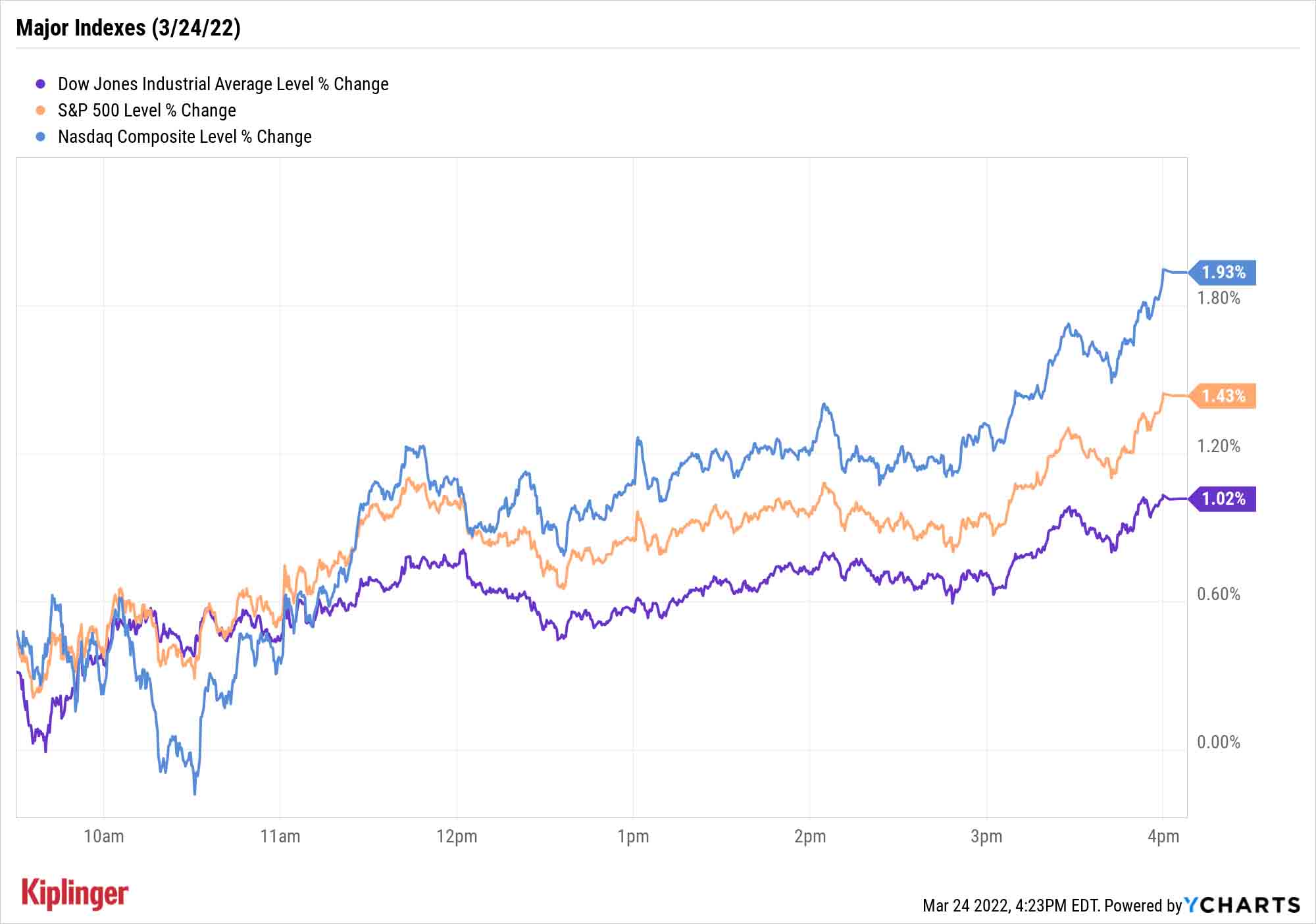
Other news in the stock market today:
- The small-cap Russell 2000 gained 1.1% to 2,075.
- U.S. crude futures fell almost 2.3% to settle at $112.34 per barrel.
- Gold futures rose 1.3% to end at $1,962.20 an ounce.
- Bitcoin joined in Thursday's rally, jumping 4.1% to $43,946.42. (Bitcoin trades 24 hours a day; prices reported here are as of 4 p.m.)
- KB Home (KBH) slid 4.6% after the homebuilder reported fiscal first-quarter adjusted earnings of $1.47 per share on $1.40 billion in revenue – lower than the $1.52 per share and $1.49 billion analysts were expecting. Still, the figures were up 44% and 23$, respectively, year-over-year, and CEO Jeffrey Mezger said KBH is well-positioned to hit its full-year financial targets. "KB Home is not seeing a slowdown in demand despite price increases and the recent spike in mortgage rates," says BofA Securities analyst Rafe Jadrosich, who reiterated a Buy rating. He also said KBH's valuation "looks very compelling with shares trading at a 12% discount to our year-end 2022 tangible book value forecast."
- Freeport-McMoRan (FCX) rose 3.3% after Jefferies analyst Christopher LaFemina chimed in on the mining stock. "Freeport is in a strong competitive position in the midst of an earnings upgrade cycle that will take years to play out," LaFemina says. "The company has a clear path to grow its cash flow and capital returns and can create additional shareholder value by developing its unique organic growth pipeline." The analyst has a Buy rating on FCX, adding " the market continues to underappreciate the likely magnitude and duration of the ongoing cyclical upturn in copper." Several other basic materials stocks also traded higher today, including Cleveland-Cliffs (CLF, +12.0%), U.S. Steel (X, +6.5%) and Nucor (NUE, +4.3%).
The Third Year of the Bull Market
Yesterday marked the end of the bull market's second year, but investors might be in for a trying year three.
The post-COVID-19 bull market is the fastest bull market to double, at just under 18 months. However, "as this bull market reaches the third year of life, investors need to remember that year three of bull markets tend to be a little tamer, with the larger gains happening in year one and two," says Ryan Detrick, chief market strategist for LPL Financial.
"In fact, out of the 11 bull markets since World War II, we found that three of them ended during year three, while the ones that didn't end saw an average gain of only 5.2%."
In other words, at least historically speaking, we can expect some turbulence in the year to come.
The good news is that prepared investors can make the most of these challenges. Stocks that stave off sizzling inflation, for instance, or stocks that excel during periods of rising interest rates, afford investors relief from two of the market's biggest present pressures.
Meanwhile, a host of exchange-traded funds (ETFs) built to withstand this year's myriad challenges will also serve folks well. Our 22 best ETFs for 2022 include a little something for everyone: all-weather funds, ETFs constructed with inflation and rising interest rates in mind, and funds designed to withstand any additional complexities that could pop up soon enough.
Get Kiplinger Today newsletter — free
Profit and prosper with the best of Kiplinger's advice on investing, taxes, retirement, personal finance and much more. Delivered daily. Enter your email in the box and click Sign Me Up.
Kyle Woodley is the Editor-in-Chief of WealthUp, a site dedicated to improving the personal finances and financial literacy of people of all ages. He also writes the weekly The Weekend Tea newsletter, which covers both news and analysis about spending, saving, investing, the economy and more.
Kyle was previously the Senior Investing Editor for Kiplinger.com, and the Managing Editor for InvestorPlace.com before that. His work has appeared in several outlets, including Yahoo! Finance, MSN Money, Barchart, The Globe & Mail and the Nasdaq. He also has appeared as a guest on Fox Business Network and Money Radio, among other shows and podcasts, and he has been quoted in several outlets, including MarketWatch, Vice and Univision. He is a proud graduate of The Ohio State University, where he earned a BA in journalism.
You can check out his thoughts on the markets (and more) at @KyleWoodley.
-
 Should You Do A Roth IRA Conversion? Nine Things to Consider
Should You Do A Roth IRA Conversion? Nine Things to ConsiderThe Tax Letter Thinking of converting a traditional IRA to a Roth IRA? The Kiplinger Tax Letter Editor highlights nine factors you should consider before making a move.
By Joy Taylor
-
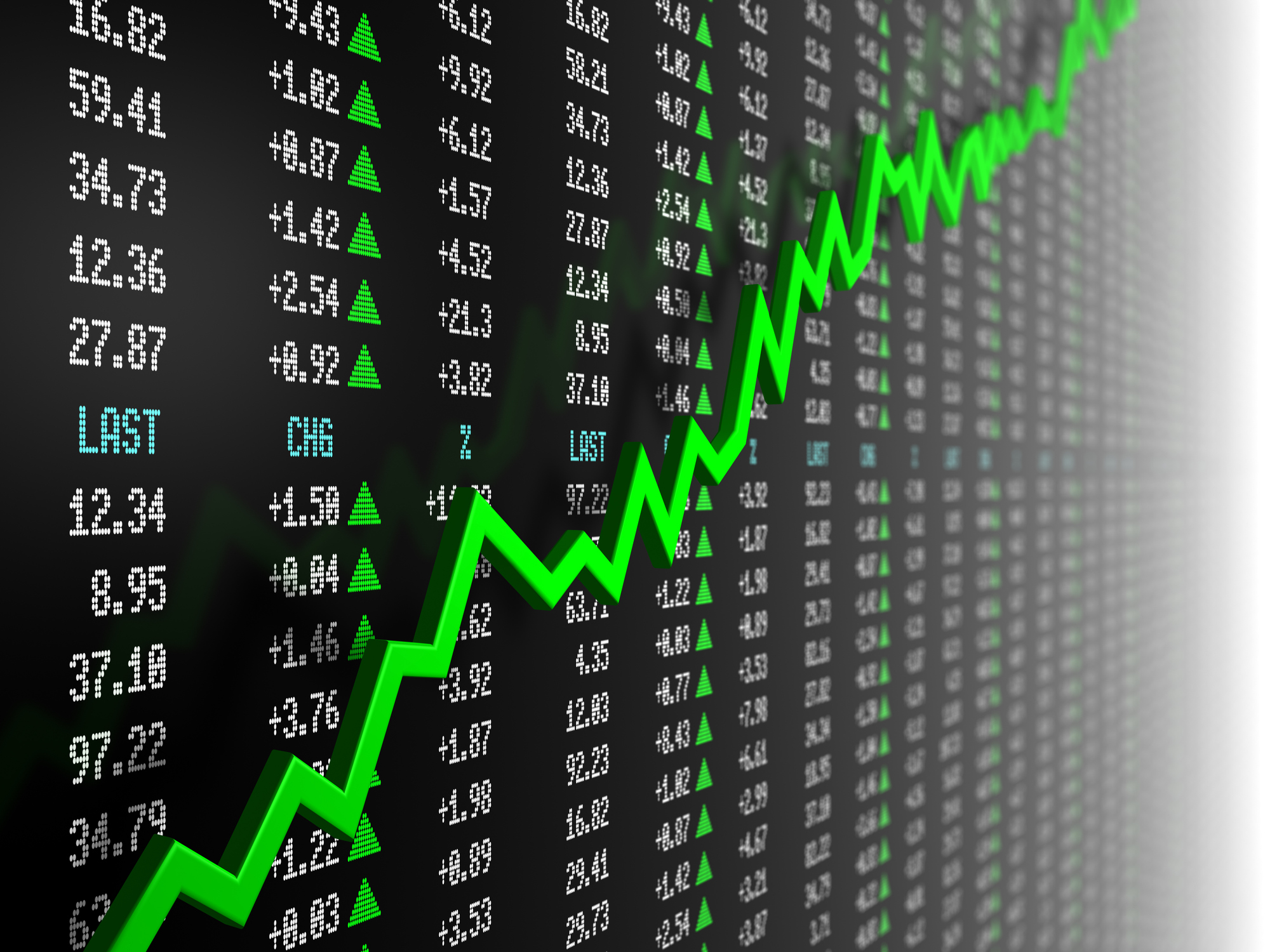 33 Stocks That Could Rally 50% or More This Year
33 Stocks That Could Rally 50% or More This YearAnalysts say these S&P 500 stocks have at least 50% price upside over the next year or so.
By Dan Burrows
-
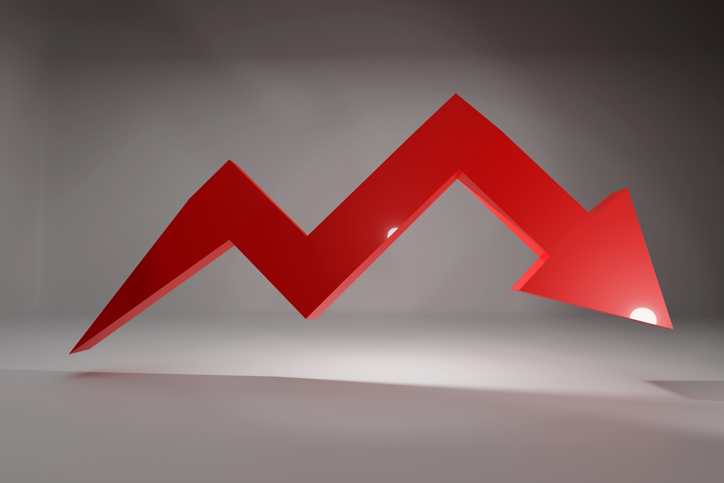 Stock Market Today: Dow Drops 971 Points as Powell Pressure Ramps Up
Stock Market Today: Dow Drops 971 Points as Powell Pressure Ramps UpPresident Trump is increasing his attacks against Jerome Powell, insisting the Fed chair cut interest rates.
By Karee Venema
-
 Stock Market Today: No 'Powell Put'? No Problem
Stock Market Today: No 'Powell Put'? No ProblemInvestors, traders and speculators look beyond both another Trump post and more signs of slowing economic activity.
By David Dittman
-
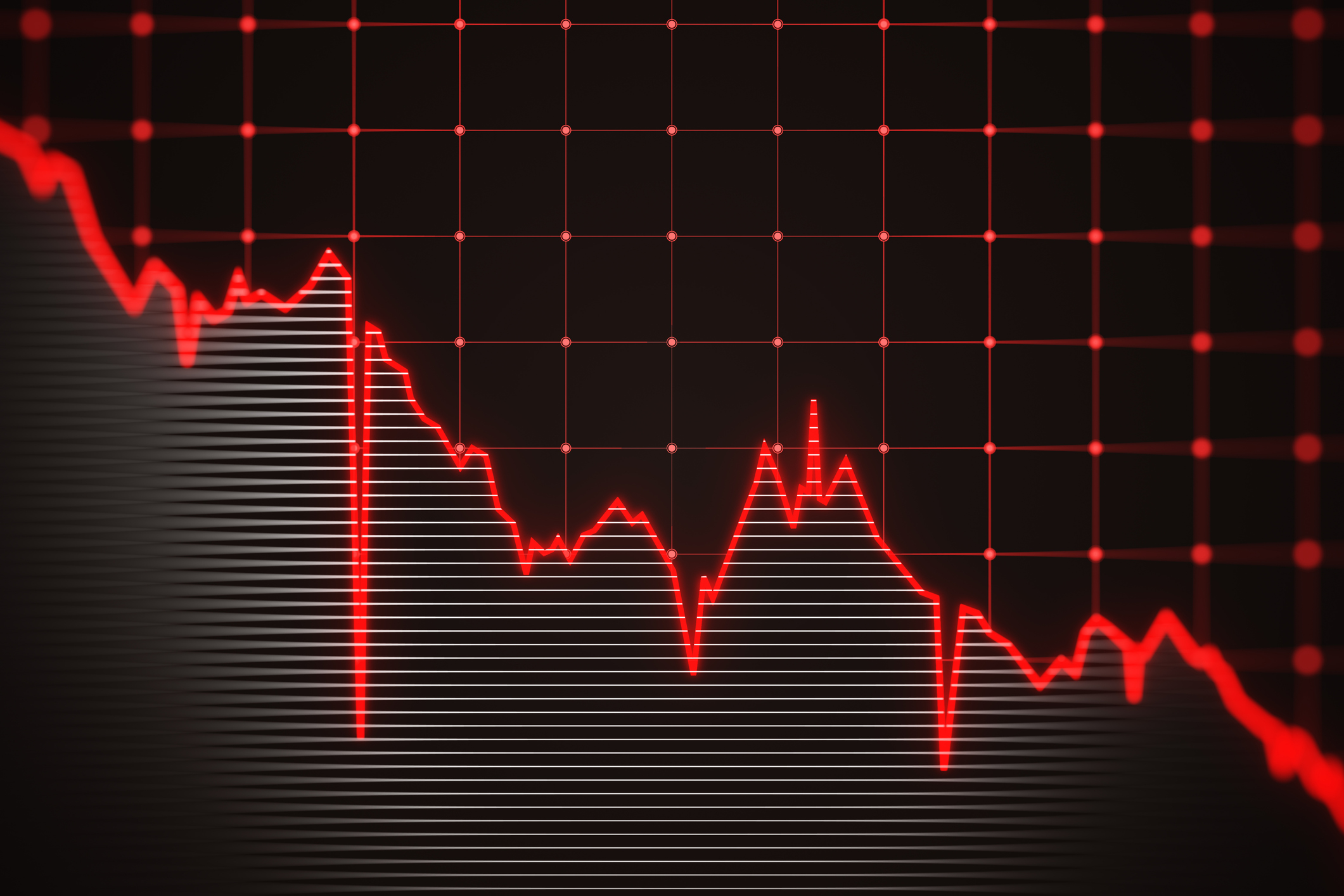 Stock Market Today: Dow Drops 699 Points After Powell Speech
Stock Market Today: Dow Drops 699 Points After Powell SpeechFed Chair Powell warned of a slowing economy and higher inflation but said the central bank isn't ready to cut rates just yet.
By Karee Venema
-
 Stock Market Today: Stocks Struggle Amid Tariff Uncertainty
Stock Market Today: Stocks Struggle Amid Tariff UncertaintyBoeing dropped after China suspended new aircraft orders, while Bank of America and Citi climbed on earnings beats.
By Karee Venema
-
 Stock Market Today: Stocks Gain on Tech, Auto Tariff Talk
Stock Market Today: Stocks Gain on Tech, Auto Tariff TalkThe Trump administration said late Friday that it will temporarily halt tariffs on some Chinese tech imports.
By Karee Venema
-
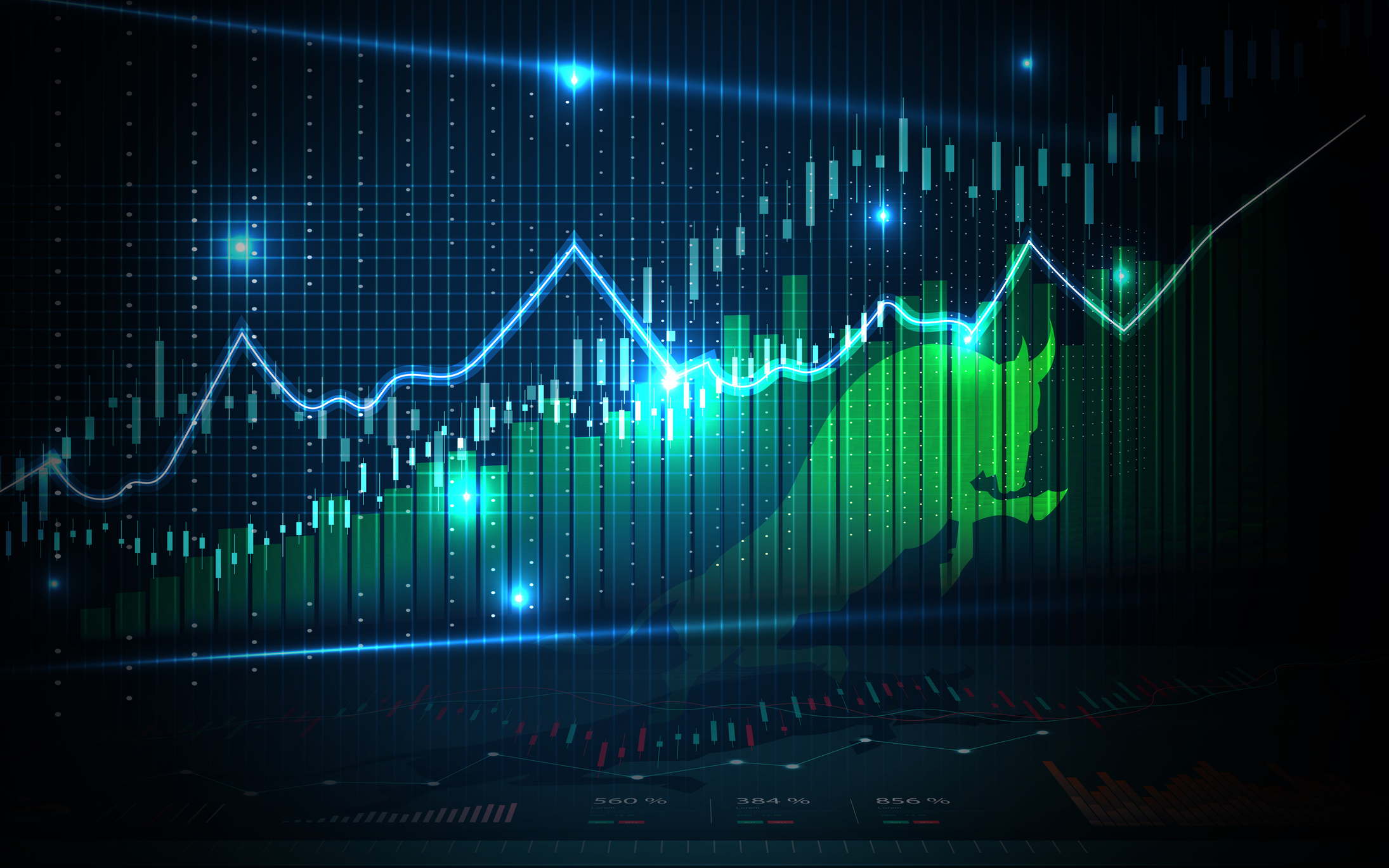 Stock Market Today: Stocks Surge to Close a Volatile Week
Stock Market Today: Stocks Surge to Close a Volatile WeekIt was another day with a week's worth of both news and price action, but it ended on a strongly positive note.
By David Dittman
-
 Stock Market Today: Uncertainty Proliferates: Dow Loses 1,014 Points
Stock Market Today: Uncertainty Proliferates: Dow Loses 1,014 PointsWeaker-than-expected consumer inflation data wasn't enough to stabilize sentiment during another volatile day for financial markets.
By David Dittman
-
 Stock Market Today: Tariff Pause Triggers 3,000-Point Dow Rally
Stock Market Today: Tariff Pause Triggers 3,000-Point Dow RallyThe bond market is sending concerning signals as the Trump administration executes its rapid reordering of global trade relationships.
By David Dittman